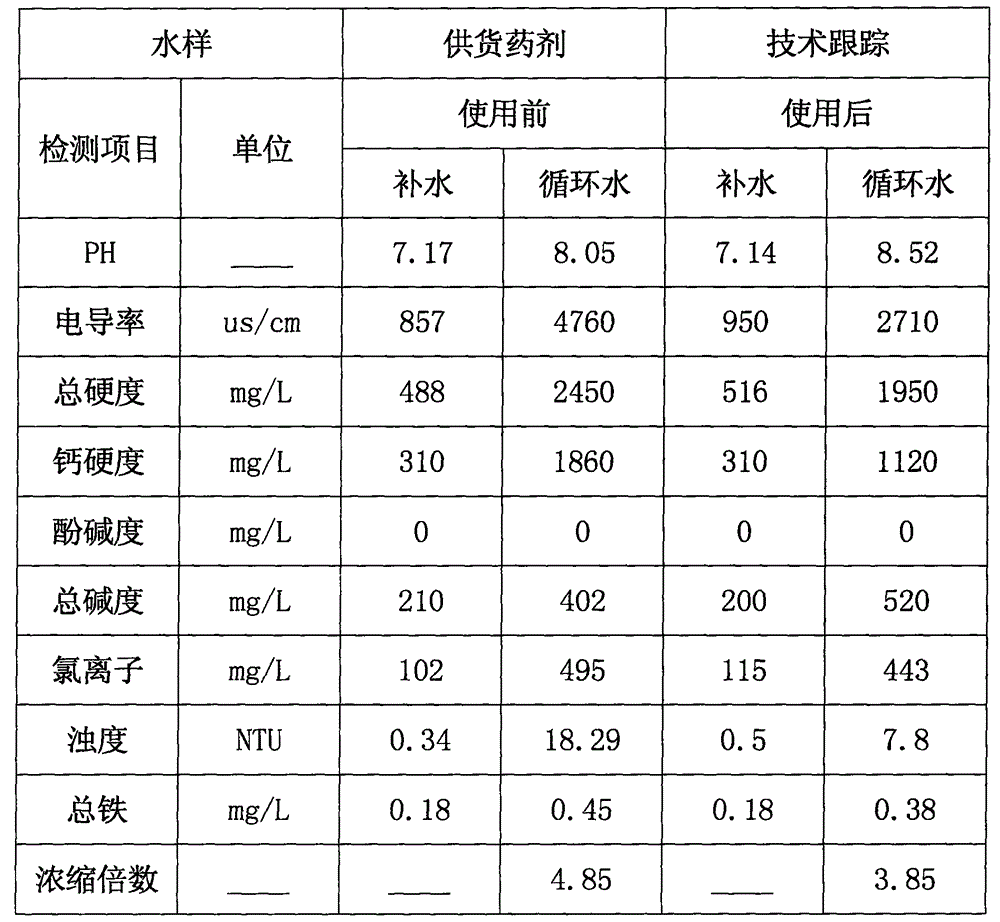Phosphorus-free, green and environment-friendly slow-release scale inhibitor
A green, environmentally friendly, scale inhibitor technology, applied in the field of scale inhibitors, can solve the problems of lake water, seawater red tide, microbial algae overgrowth, etc., and achieve excellent scale inhibition effect, excellent scale inhibition effect, and wide-ranging effects
- Summary
- Abstract
- Description
- Claims
- Application Information
AI Technical Summary
Problems solved by technology
Method used
Image
Examples
Embodiment 1
[0014] A kind of non-phosphorous green environmental protection slow-release antiscalant, its raw material comprises the following components by weight: 15 parts of maleamic acid, 8 parts of chitosan, 3.8 parts of lignin, 7 parts of starch, 10 parts of sodium humate 2 parts, polyacrylic acid 2 parts, sodium molybdate 7 parts, zinc stearate 3.6 parts, zinc borate 8 parts, sodium lactate 7 parts, triethanolamine 7 parts, benzotriazole 6 parts, polyaspartic acid 12 parts, 9 parts of S-carboxyethylthiosuccinic acid, 20 parts of polyepoxysuccinic acid, 11 parts of acrylic acid-2-acrylamide-2-methylpropanesulfonic acid copolymer, 65 parts of water.
Embodiment 2
[0016] A kind of non-phosphorous green environmental protection slow-release antiscalant, its raw material comprises the following components by weight: 10 parts of maleamic acid, 10 parts of chitosan, 3 parts of lignin, 9 parts of starch, 8 parts of sodium humate 2.3 parts of polyacrylic acid, 5 parts of sodium molybdate, 4 parts of zinc stearate, 7 parts of zinc borate, 10 parts of sodium lactate, 6 parts of triethanolamine, 7 parts of benzotriazole, 15 parts of polyaspartic acid, 8 parts of S-carboxyethylthiosuccinic acid, 22 parts of polyepoxysuccinic acid, 8 parts of acrylic acid-2-acrylamide-2-methylpropanesulfonic acid copolymer, 65 parts of water.
Embodiment 3
[0018] A kind of non-phosphorous green environmental protection slow-release antiscalant, its raw material comprises the following components by weight: 16 parts of maleamic acid, 7 parts of chitosan, 4 parts of lignin, 5 parts of starch, 12 parts of sodium humate 1.8 parts of polyacrylic acid, 9 parts of sodium molybdate, 3 parts of zinc stearate, 9 parts of zinc borate, 6 parts of sodium lactate, 8 parts of triethanolamine, 4 parts of benzotriazole, 11 parts of polyaspartic acid, 10 parts of S-carboxyethylthiosuccinic acid, 18 parts of polyepoxysuccinic acid, 12 parts of acrylic acid-2-acrylamide-2-methylpropanesulfonic acid copolymer, 60 parts of water;
[0019] Wherein, the maleamic acid is obtained by reacting maleic anhydride and ammonium sulfate at 320° C. for 6 h, wherein the ratio of maleic anhydride to ammonium sulfate is 1:2.
PUM
 Login to View More
Login to View More Abstract
Description
Claims
Application Information
 Login to View More
Login to View More - R&D
- Intellectual Property
- Life Sciences
- Materials
- Tech Scout
- Unparalleled Data Quality
- Higher Quality Content
- 60% Fewer Hallucinations
Browse by: Latest US Patents, China's latest patents, Technical Efficacy Thesaurus, Application Domain, Technology Topic, Popular Technical Reports.
© 2025 PatSnap. All rights reserved.Legal|Privacy policy|Modern Slavery Act Transparency Statement|Sitemap|About US| Contact US: help@patsnap.com

